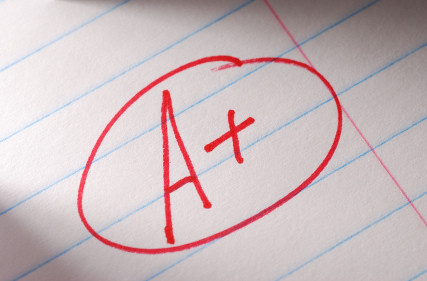
![]() Assessment has a lot of purposes, the least important of which is to give students a number on a report card. Some that come to mind are:
Assessment has a lot of purposes, the least important of which is to give students a number on a report card. Some that come to mind are:
- educating students and parents on proficiency
- helping students identify areas that need improvemen
- keeping parents informed on their child’s progress, responsibility, etc.
- showing administration what your class is doing and how they’re learning
But to me, one of the most important purposes of assessment, particularly formative assessment, is to tell me something: what are the persistent errors my students are making? That’s some of the most valuable information I can use to inform the content of my class. After all, isn’t this one of the areas of most-needed reform in education? Students are assigned to do the same number of exercises every class and every night, regardless of whether they’ve completely mastered the concept or are doing it wrong over and over and cementing the error in their minds.
Here are some practical steps to take to use assessment to inform the content of your teaching.
- As you look through or listen to student work (or even casually listen to them in class), jot down prevalent and persistent mistakes. Keep a notepad (or digital note or whatever) handy so you can make a note when the thought strikes. If I don’t write it down, later when I’m planning a story or an activity I think, “What was that error 80% of the class was making in that assignment?” For example purposes, let’s say that a majority of students are using “Yo es.”
- Plan to target input. Develop a story or find an authentic source (or both) that uses your target feature. I might plan to tell a story soon that involves two characters comparing their features, or a character who is making a profile for an online dating site, or a character who is helping his mom set up a Facebook profile.
- Plan a sentence starter with the target. Begin a subsequent (soon) class by having the starter written on the board: Yo soy _____ pero [personaje] es _____. Give a few examples. I use funny characters instead of classmates to avoid giving any opportunity for insult, perceived or otherwise. Examples might be “Yo soy baja, pero Michael Jordan es alto. Yo soy blanca, pero Winnie de Puh es café.” When most students indicate they understand the prompt, I toss a ball or stuffed animal or whatever (Garfield and a stuffed moose were our favorites, even with my seniors) to someone I know understands what’s going on and will be clever about it, to give another good example without them all coming form me. That student looks for a volunteer to toss it to and the next student does the same thing. They know they can volunteer, but they also know that everyone has to go so they might as well volunteer sometime. With large classes, this will get old quickly and so you can divide it into 5-minute brain breaks throughout the class period.
One interesting aspect is that students don’t know what I’m targeting here. It looks like I’m targeting adjectives, maybe contrasts, maybe the connector pero, maybe masculine/feminine, but really it’s none of that. I just want everyone to hear yo soy a couple dozen times. - Play a game. For example, students can have an unknown character taped to their back (Mickey Mouse, Justin Beiber) and they have to ask classmates yes/no questions with soy to try to figure out who they are: ¿Soy músico? ¿Soy alto? ¿Soy rico? ¿Soy animal?
- Do a follow-up assessment to see if things have improved. Unannouced, begin class by asking students to describe themselves in four phrases, or to do so by calling your Google Voice number, etc.
Try this and see if you can’t improve accuracy on students’ persistent errors. Do you have other ideas to use assessment to inform your teaching?
3 Comments
Comments are closed.




Dude, you just summed up what Entry 1 is about on National Boards! I’m passing this on to some friends!
Cool, and I didn’t even know it! Maybe this National Boards thing is something I should look into… 😉
[…] Assessment has a lot of purposes, the least important of which is to give students a number on a report card. […]